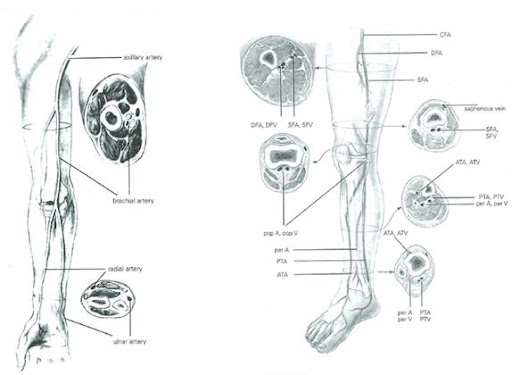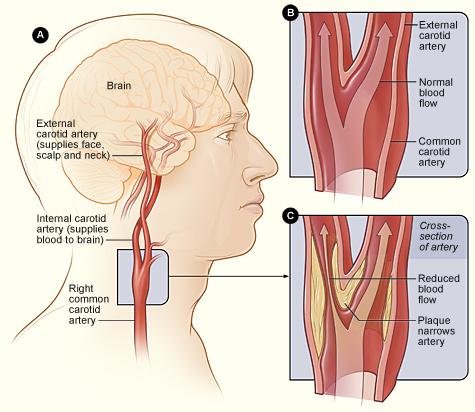ABOUT
Vascular Studies
Vascular testing helps diagnose disorders of the arteries and veins in the legs, arms, neck and head utilizing non-invasive ultrasonic and imaging technologies. By measuring blood flow, these tests accurately document the presence, location and severity of occlusion. Occlusion occurs when plaque builds up in the arteries and veins that carry blood to and from the head, organs, and limbs. Plaque is made up of fat, cholesterol, calcium, fibrous tissue, and other substances in the blood. Over time, plaque can harden and narrow the arteries and veins, which limits the flow of oxygen-rich blood to and from the organs and other parts of the body. Early detection can be lifesaving and can help prevent serious conditions such as stroke and heart problems.
Upper Exam: includes evaluation of the vessels of the arm. The arterial exam comprises of the Brachial, Radial and Ulnar arteries. The Venous exam includes the Subclavian, Axillary and Brachial veins. Comparison is made between the right and left arms, which are correlated to the clinical symptoms.
Lower Exam: includes evaluation of the vessels of the legs. The arterial exam comprises of the Superficial Femoral, Posterior Tibial, and Popliteal arteries. The Venous exam includes the Common Femoral, Superficial Femoral and Popliteal veins. Comparison is made between the right and left legs, which are correlated to the clinical symptoms.


The Carotid Artery is a part of our Vascular exam. Using sound waves, a doppler ultrasound is a painless and safe way to check your carotid arteries ― which supply your brain with blood ― for narrow or blocked areas. With this information, your healthcare provider can decide whether you need lifestyle changes, medicines or a procedure to cut down your risk of a stroke. (Cleveland Clinic)
The ABI is a part of our Vascular exam. This test compares the blood pressure in the upper and lower limbs. Our medical professionals calculate ABI by dividing the blood pressure in an artery of the ankle by the blood pressure in an artery of the arm. The result is the ABI. If this ratio is less than 0.9, it may mean that a person has peripheral artery disease (PAD) in the blood vessels in the legs.
- Pain, numbness, weakness, tender to touch, loss of range of motion in extremity and joint
- Suspected tendonitis
- Inflammation or swelling in the joint
- Stretch injury, strain, sprain
- Arthritis
- Rotator cuff tears
- Carpal Tunnel injury
- Bursitis
- Cubital Tunnel injury
- Prevent serious, life-threatening conditions
- Reveal clots and other vascular-related disease
- Help form a customized treatment plan
- Utilizes tests that are painless and noninvasive
- Affordable methodology with quick results performed by Licensed Professionals
